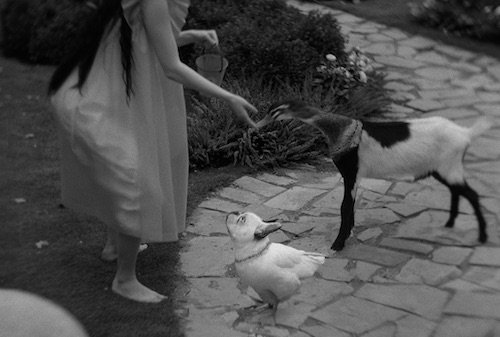Best Visual Effects: Ranking Every 96th Academy Award Nominee
Written by Andreas Babiolakis
This article is a part of the Academy Awards Project, where Andreas Babiolakis from Films Fatale ranks every Oscar nominee from worst to best, and goes through every category once a day five days a week.
It’s a new week of the Academy Awards Project, and a fresh batch of five categories and their respective nominees. This week, I’ll be looking at various tech and design categories, and I’ll be kicking it off with the two categories based on what we can see and how we see it. First off is Best Visual Effects, which is usually a pretty tough category to make heads and tails of. You’d think that the film that boasts the largest amount of CGI in an obvious sense would be the clear winner, but there are usually subtle, deceptive uses of computer-generated imagery that get acknowledged here too; films that look like they were shot in these settings and with these landscapes when that isn’t the case, for instance. How does one go about ranking these nominees (especially when I wouldn’t consider any of these bad)? I try to focus on what graphics look the most convincing (or which graphics at least look interesting, if they’re not super realistic), and which films showcase the most different types of visual effects (places, beings/motion capture, objects, et cetera). Finally, which films made me the most confused as to what is real and what isn’t are usually what I give more kudos to.
Here are your nominees for Best Visual Effects ranked from worst to best.
Biggest Snub: Poor Things
While most of what we see in Poor Things is clearly generated, what was presented was at least fascinating to look at, be it fantasy-based worlds, or the animal hybrids found at God’s house (as unusual as they are, they were a highlight for me regarding the CGI work done on the film). Of course, it’s easy to see why the Academy members thought that Poor Things didn’t feel as realistic as the nominees that did get in (even the ones with alien beings and a giant monster, while Poor Things has a visual uncanniness to it), but my point is that the costumes, production, and other design-based elements aren’t rooted in reality and haven’t been penalized by being snubbed. Why should the visual effects be any different? Of course, many fictional beings and places get honoured in this category and such was the case this year. I guess the Academy didn’t want to go overboard with the amount of films of this nature here. Sorry, Poor Things.
5. Napoleon-Charley Henley, Luc-Ewen Martin-Fenouillet, Simone Coco and Neil Corbould
The bulk of Napoleon’s visual effects work comes in the form of filling out landscapes, padding out soldier numbers, and the action that takes place throughout. I’d argue that Napoleon does a good enough job here because of how difficult it is to tell what is real and what isn’t, which is usually a strong selling point to me in typical years. This isn’t quite a typical year, though. The films rooted in science fiction this year killed it, so illusionary works like Napoleon (which recreate worlds of yesteryear, as opposed to worlds of other realities) may pale in comparison this time around. Oh well. I see why Napoleon is here, especially when the bulk of the film’s best scenes are war-based sequences (and it isn’t even a contest, compared to what else we get in this film).
4. Mission Impossible-Dead Reckoning Part One-Alex Wuttke, Simone Coco, Jeff Sutherland and Neil Corbould
Before we get into what works in Dead Reckoning Part One (or, apparently, it’s just “Dead Reckoning”, now), I’d like to point out how this latest Mission Impossible film was the tentpole guinea pig during the height of the COVID-19 pandemic: a means of seeing what was feasible during the lockdown on film sets. All things considered, this film looks terrific. Had we not had social media to remind us of this fact every single day for a few years, it would be easy to fool someone into thinking that Dead Reckoning was made during a typical time in film history. Back to the effects themselves. We have the opening submarine sequence which is an early showcasing of what is in store with this film, quite a few instances where it’s tough to tell what’s actually there and what isn’t, and more. Then, we get to the Uncharted 2 tribute with the hanging-train sequence, which is an obvious portfolio of visual effects wizardry. In other years, like Napoleon, Dead Reckoning may be even higher, but the competition is quite stiff this time around.
3. The Creator-Jay Cooper, Ian Comley, Andrew Roberts and Neil Corbould
As mediocre as The Creator is, this film looks phenomenal, and the majority of its success comes from how strong the visual effects are (easily some of the best of the year). Between the android motion capture wizardry, the incredible robotic and machinery creations, and the expansive sets, The Creator is a visual feast to get lost in. Even though we know these androids aren’t real, something about them just feels so convincing. This is the kind of CGI that I feel like would age well ten, twenty, or thirty years from now. I could be wrong, but so much of this film just feels like you can touch what you see. This film would even win in other years and I’m sure of it; it has a slim chance of winning in 2024, but, again, this is a tough year. Make no mistake: The Creator deserves to be here and it possesses some of the best visual effects you’ll see all year.
2. Guardians of the Galaxy Vol. 3-Stephane Ceretti, Alexis Wajsbrot, Guy Williams and Theo Bialek
Marvel has become infamous for how many corners have been cut in the visual effects department; so many films get pumped out a year, and the CGI team isn’t given enough time to make the proper film magic, Due to the number of delays, it seems like Guardians of the Galaxy Vol. 3 is the only Marvel film in a couple of years to have had the proper dedication necessary, and it shows. The aliens look great, and the anthropomorphic animals look even better. There’s also — in typical Guardians fashion — so much going on that you cannot ignore just how many hours of visual effects mastery were put into this intergalactic wonderland. Kudos to the makeup department as well, as it was tough to discern what was CGI and what was practical in relation to the creature and people designs. Outside of the obvious, it became difficult to know what buildings (yes, even the houses in the Earth-clone neighbourhood) and people were actually there, and what were entirely made by CGI. Finally: a Marvel film that is a marvel to look at again.
1. Godzilla Minus One-Takashi Yamazaki, Kiyoko Sibuya, Masaki Takahashi and Tatsuji Nojima
And then there was the King of the Monsters. Godzilla Minus One has stolen every conversation regarding 2023 blockbuster action flicks, and the best CGI of recent memory. Let’s get the elephant — or, erm, lizard — in the room out of the way. Godzilla looks the best it has perhaps ever looked. If I were a child watching this film, I would be fully convinced that this monster is real and that I would have to worry about it stomping around my neighbourhood. The design and the execution (both matter) are borderline flawless, in my opinion. Then comes the massive amounts of destruction that take place in this homage to the original Godzilla film, and the majority of the film’s epic scale comes from the devastation that you can swear is taking place; it’s highly effective as an allegory for the ruination that Japan has faced via bombing and earthquakes (similar to last year’s Suzume). The CGI here is tasteful yet ambitious. It goes all-out, yet it isn’t impossible to believe. Godzilla Minus One is a winner, in my eyes.
Who I Want To Win: I think the strongest candidates this time around are Godzilla Minus One, Guardians of the Galaxy Vol. 3, and The Creator, and I would be happy with either of these three winning.
Who I Think Will Win: Right now, I’m giving this to Godzilla Minus One, especially because it’s the only category that this beloved film is nominated in (I’ve seen this story before: adored films with one nomination that it is actually strong in usually gets the edge). Mind you, I wouldn’t also rule out The Creator winning back some Oscars-season steam that it once had and winning. Time will tell for this one, but for now, I’m going with the King of Monsters.
The Academy Awards Project will continue tomorrow with another category. We’re going to rank every single nominee in every single category, Monday through Friday. You don’t want to miss it!
Andreas Babiolakis has a Masters degree in Film and Photography Preservation and Collections Management from Ryerson University, as well as a Bachelors degree in Cinema Studies from York University. His favourite times of year are the Criterion Collection flash sales and the annual Toronto International Film Festival.









